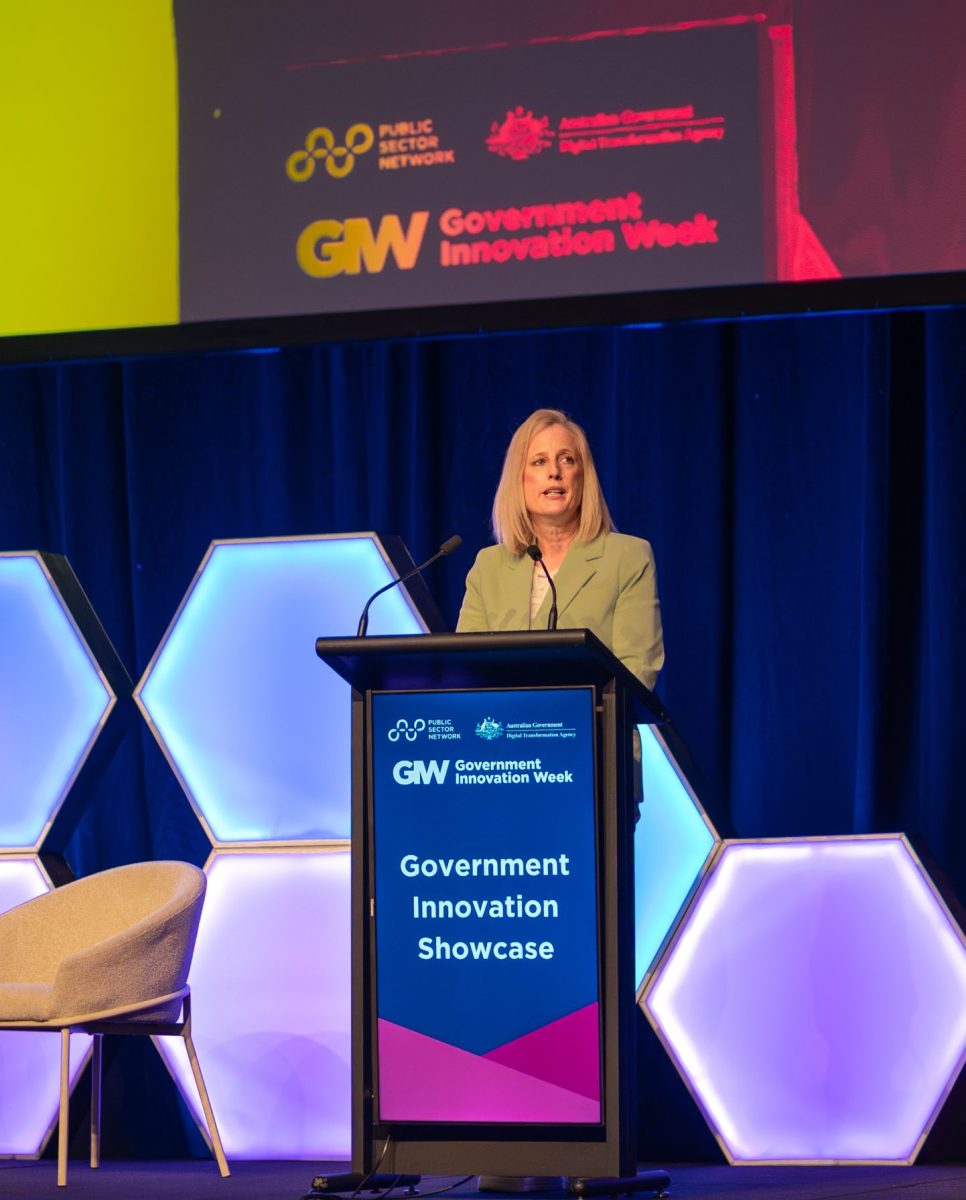
Public Service Minister Katy Gallagher announcing the government’s AI Plan for the Public Service. Photo: Supplied.
Artificial intelligence is to be embedded across the Australian Public Service as the Federal Government seeks to tap into the full potential of the technology to help it run the country.
Every government agency will have an SES-level chief AI officer by July next year; a new team will be created within the Finance Department to guide the adoption of AI across the service; and contractors to the government will have to become AI-savvy to comply with new rules.
AI will be utilised across all areas of government, with the rollout of its own AI chatbot accessible to all employees, and training in the use of the technology will be made mandatory.
Artificial intelligence programs could soon write sensitive business plans and even Cabinet submissions.
Finance and Public Service Minister Katy Gallagher released the government’s AI Plan for the Public Service during her Annual Statement of APS Reform on Wednesday (12 November) at the Government Innovation Showcase held in Canberra.
Describing it as marking a new era for the delivery of public services to Australians, the minister said the plan will guide the “safe, responsible, and strategic adoption of AI” and drive uptake across government.
“We will be making generative AI available to everyone – whether you’re a grad or SES, working in ICT or in a contact centre,” she said.
“It will give every public servant the confidence to embrace AI, drive productivity, and ensure the APS leads on the economy-wide transformations that generative AI is driving.”
Under the plan, every federal public servant will have access to generative AI tools; comprehensive training and capability support; and clear guidance on how to use these tools safely and responsibly.
AI officers will not only guide employees in the adoption of the technology in their work, but will also enforce compliance.
“We will establish a central AI team in Finance called the AI Delivery and Enablement team, or AIDE – a multidisciplinary expert group helping guide agencies to overcome common barriers, share lessons, and accelerate adoption,” Senator Gallagher said.
“Alongside the Chief AI Officer and AIDE Team, there is an expectation that all senior leaders will be AI literate and lead by example in using AI to demonstrate capabilities and to drive uptake across teams.”
The aim is for every public servant to have direct access to secure generative AI on their laptop through the GovAI platform, and through the development of the government’s own Gov AI Chat.
The plan is to create a government-based platform that avoids vendor lock-in, allowing the APS to adopt emerging technologies and solutions.
“This is the first plan, but it won’t be the last,” Senator Gallagher said.
“The days of 10-year strategic plans, a set and forget of policy development, are well and truly over. This plan will have to be regularly updated so it remains current and relevant.
“But this first plan is important as it sends a very strong signal from government that we want to see the safe and responsible adoption of AI be widely taken up across government in every department and every workplace.”
The plan will require external contractors to advise the government on its planned use of AI on projects, abide by stipulations regarding quality and transparency, and accept accountability for all work produced.
This follows the recent case in which consultancy giant Deloitte delivered an expensive report to the Department of Employment and Workplace Relations, full of AI-generated errors.
The Deloitte reports contained non-existent academic references and a completely fabricated quote from a Federal Court judgment.
Trials of AI within the APS have also returned mixed results, with some public servants raising concerns about inaccuracies and low quality of some AI-generated work.
The potential for further adoption of automated decision-making in service delivery, particularly in the context of government benefits and payments, is a cause for concern.
Alarm bells have also been ringing over the potential for the technology to replace entry-level jobs in the service.
The Minister, however, said that while the productivity boost AI offers the government is too great to ignore, it is not seen as a pathway to employing fewer people.
“I also want to say very clearly that the government does not view widespread AI adoption across the APS as a way of replacing people,” Senator Gallagher said.
“We see it much more through the lens of unlocking new capabilities; improving work processes and flows; looking to improve our performance when delivering services; and ensuring that public servants are focused on work that requires human insight, empathy and judgment.”
Original Article published by Chris Johnson on Region Canberra.









